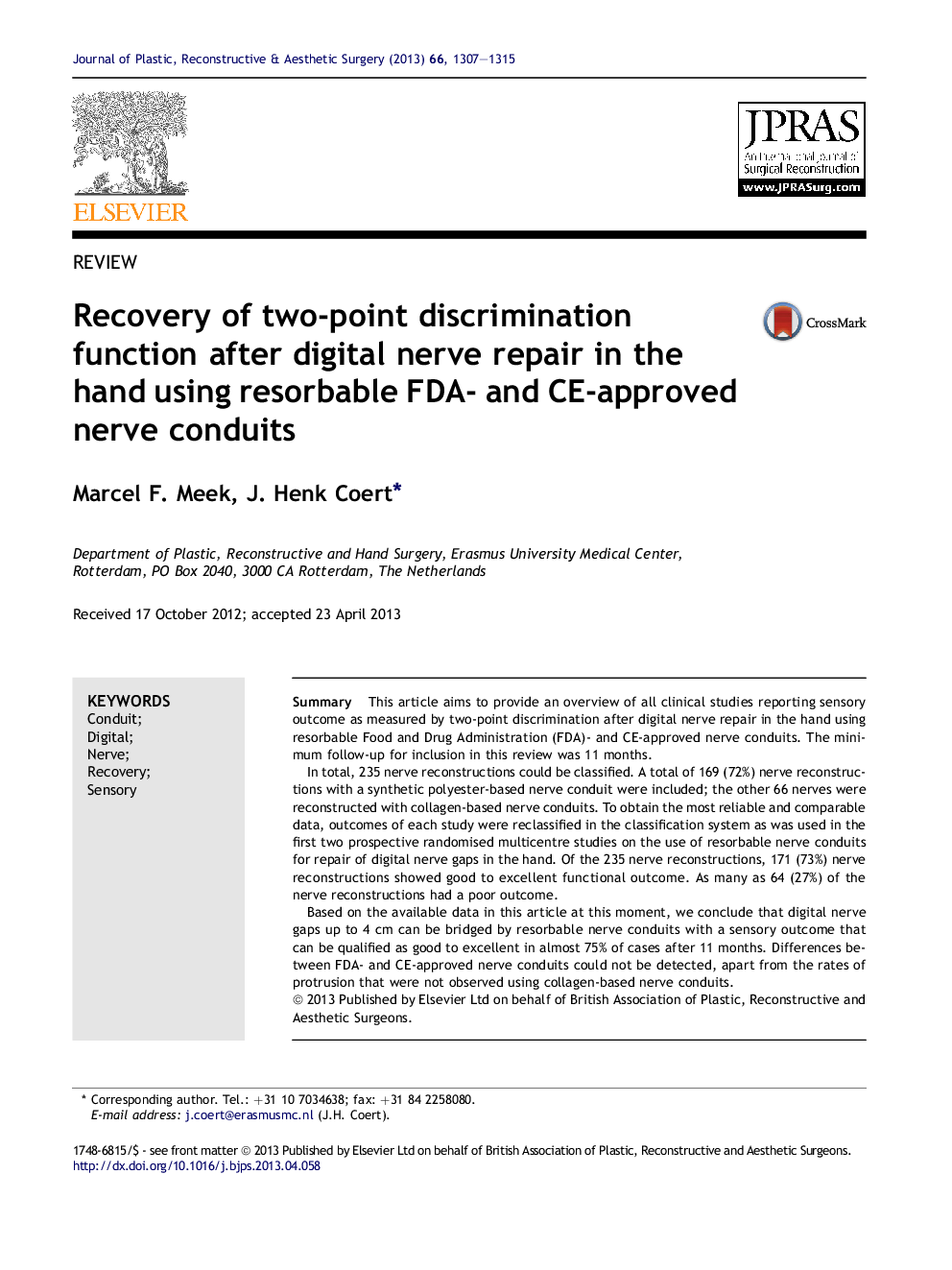| Article ID | Journal | Published Year | Pages | File Type |
|---|---|---|---|---|
| 4118707 | Journal of Plastic, Reconstructive & Aesthetic Surgery | 2013 | 9 Pages |
SummaryThis article aims to provide an overview of all clinical studies reporting sensory outcome as measured by two-point discrimination after digital nerve repair in the hand using resorbable Food and Drug Administration (FDA)- and CE-approved nerve conduits. The minimum follow-up for inclusion in this review was 11 months.In total, 235 nerve reconstructions could be classified. A total of 169 (72%) nerve reconstructions with a synthetic polyester-based nerve conduit were included; the other 66 nerves were reconstructed with collagen-based nerve conduits. To obtain the most reliable and comparable data, outcomes of each study were reclassified in the classification system as was used in the first two prospective randomised multicentre studies on the use of resorbable nerve conduits for repair of digital nerve gaps in the hand. Of the 235 nerve reconstructions, 171 (73%) nerve reconstructions showed good to excellent functional outcome. As many as 64 (27%) of the nerve reconstructions had a poor outcome.Based on the available data in this article at this moment, we conclude that digital nerve gaps up to 4 cm can be bridged by resorbable nerve conduits with a sensory outcome that can be qualified as good to excellent in almost 75% of cases after 11 months. Differences between FDA- and CE-approved nerve conduits could not be detected, apart from the rates of protrusion that were not observed using collagen-based nerve conduits.
